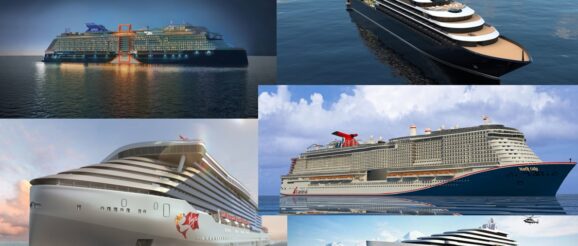Maritime innovation: Passenger Comfort on Ships (Guide)

(www.MaritimeCyprus.com) Passenger comfort is a paramount consideration in the design and operation of modern ships, whether they are cruise liners, ferries, or cargo vessels that occasionally accommodate passengers. The technical aspects of ensuring passenger comfort on ships are multifaceted and require meticulous planning and engineering to create a safe, pleasant, and enjoyable experience for travelers. In this article, we will delve into the elements that contribute to passenger comfort on ships.
-
Stabilization Systems
One of the most critical technical aspects of passenger comfort on ships is the implementation of stabilization systems. These systems are designed to counteract the effects of wave motion, which can lead to seasickness and discomfort among passengers. Two common stabilization systems are:
a. Active Stabilization: Active systems, such as gyroscopic stabilizers or fins, use sensors to detect the ship’s movement and adjust the stabilizing elements in real-time. This helps reduce rolling and pitching motions, providing a smoother ride for passengers.
b. Passive Stabilization: Passive systems include anti-roll tanks, which use water to counteract the ship’s movement. These systems are less complex but require careful design to be effective.
-
Noise and Vibration Control
Excessive noise and vibrations can be significant sources of discomfort for passengers. Ships employ various technical solutions to mitigate these issues:
a. Noise Isolation: Sound insulation materials and acoustic design are used to minimize noise transmission from engines, machinery, and other sources to passenger areas.
b. Vibration Dampening: Vibration isolators and dampeners are employed to reduce vibrations caused by engines and propulsion systems.
-
HVAC Systems
Proper heating, ventilation, and air conditioning (HVAC) systems are crucial for maintaining a comfortable onboard environment. Technical considerations include:
a. Air Quality: Advanced filtration systems ensure that the air is clean and free of allergens, providing a healthy atmosphere for passengers.
b. Temperature Control: Sophisticated control systems maintain consistent temperatures in cabins and public spaces, catering to passenger preferences.
c. Humidity Control: Maintaining optimal humidity levels prevents discomfort caused by dry or overly humid air.
-
Passenger Accommodation Design
Technical design aspects of passenger areas play a significant role in ensuring comfort:
a. Cabin Layout: Efficient cabin layout design maximizes space and functionality while providing a sense of openness.
b. Ergonomics: Furnishings and seating are designed with ergonomics in mind, ensuring comfort during extended periods of use.
c. Lighting: The use of natural light and well-designed artificial lighting systems can greatly enhance the ambiance of passenger areas.
-
Safety Features
Passenger comfort is closely tied to safety, and the technical design of safety features is of paramount importance:
a. Sturdy Construction: Ships are built to withstand the rigors of the sea, ensuring passenger safety even in adverse weather conditions.
b. Evacuation Systems: Technical elements like lifeboat launch systems and emergency lighting are integral to passenger safety.
Passenger comfort on ships is not solely dependent on luxurious amenities but is deeply rooted in the technical aspects of ship design and operation. Engineers and naval architects must consider stabilization systems, noise and vibration control, HVAC systems, passenger accommodation design, and safety features to create a safe and enjoyable environment for travelers. As technology continues to advance, the pursuit of passenger comfort on ships will undoubtedly evolve, ensuring that maritime travel remains a pleasurable experience for all.
One of the leading Classification societies ABS, has produced the Guide for Passenger Comfort on Ships in order to provide a single source for comfort criteria suitable for passenger ships. ABS has established objective assessment criteria and measurement methodologies for comfort based on current research and standards relating to human psychological and physiological responses. This Guide may be applied to passenger vessels carrying more than twelve (12) passengers used for such purposes as commuting, traveling, vacationing, and recreating. This includes cruise ships and ferries (conventional and high-speed craft).
For more details, you can download below the ABS Guide for Passenger Comfort on Ships:
Source: ABS
